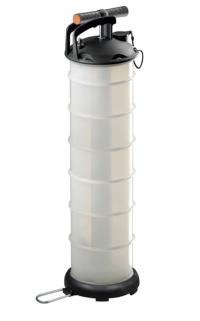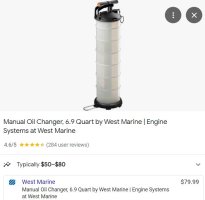Got these comments (below in bold) about my YouTube vid, which is at the beginning of this thread, critiquing my oil changing routine. Again, I want to make the point about all my advice given here and on my YouTube channel, I’m not saying it’s the right thing to do, it’s just the way I do it that works for me. Always open to learning new tricks, even at my age, but also retain the right to not take advice given for a variety of reasons I won’t go into here. I don’t know if the person who made these comments is an Ericson owner but some of them seem maybe useful. My comments about his advice is below his.
Very easy and simple to avoid and get out of that mess. Once the oil filter is loosened:
■ looking at the side of the filter punch a hole with an awl at the 9 o'clock mark and then make it bigger with a punch
■ then make another hole on the face/bottom of the filter at the 12:00 o'clock position; this facilitates a vent for faster draining.
■ place a small catch device under the filter
■ spin the filter so the 9 o'clock hole is pointing downward so it can drain The filter will drain nice a cleanly into your catch device. Place it in a gallon zip lock and discard accordingly. I have seen far TOO many times oily bilge water making its way into the waterways, even though the boater felt they were able to contain and clean up any spillage of oil in their bilge. One quart of standard motor oil will slick over 2 acres of water.
I‘ve used the punch hole method before on cars that I’ve owned and was never really comfortable with it. I also found that sometimes it made a bigger mess depending on the orientation of the filter. “Place a small catch device under the filter”….like what? A cup, a bowl, and who’s gonna hold it in position? There is no convenient place to set down a “small catch device” and so a second set of hands is required which isn’t possible if you’re doing this job alone. As for oil spillage, not much gets out of my plastic bag technique and any that does is caught using the “boat diapers“ that I place around my work area. Plus, the oil bilge picks up any drips where there is another boat diaper that always stays there.
There was another comment he made (that I couldn’t copy from YouTube) about the dark color of the oil on the dip stick after I made the oil change. He said that it was obvious that I wasn’t getting all of the old oil out of the pan and that after adding oil and checking the stick it should be honey colored. Well, that’s never happened on my boat or in any car I’ve changed oil on. Granted, because of the engine tilt I’m probably not getting all of the old oil out even using the banjo fitting but I don’t see this as a big problem since I’m getting most out and replacing it with fresh.
Now maybe I’m doing something wrong or there is a better way. If so I’d like to hear it for other Ericson owners who know their auxiliaries “intimately“…if I can use that work in this context.




